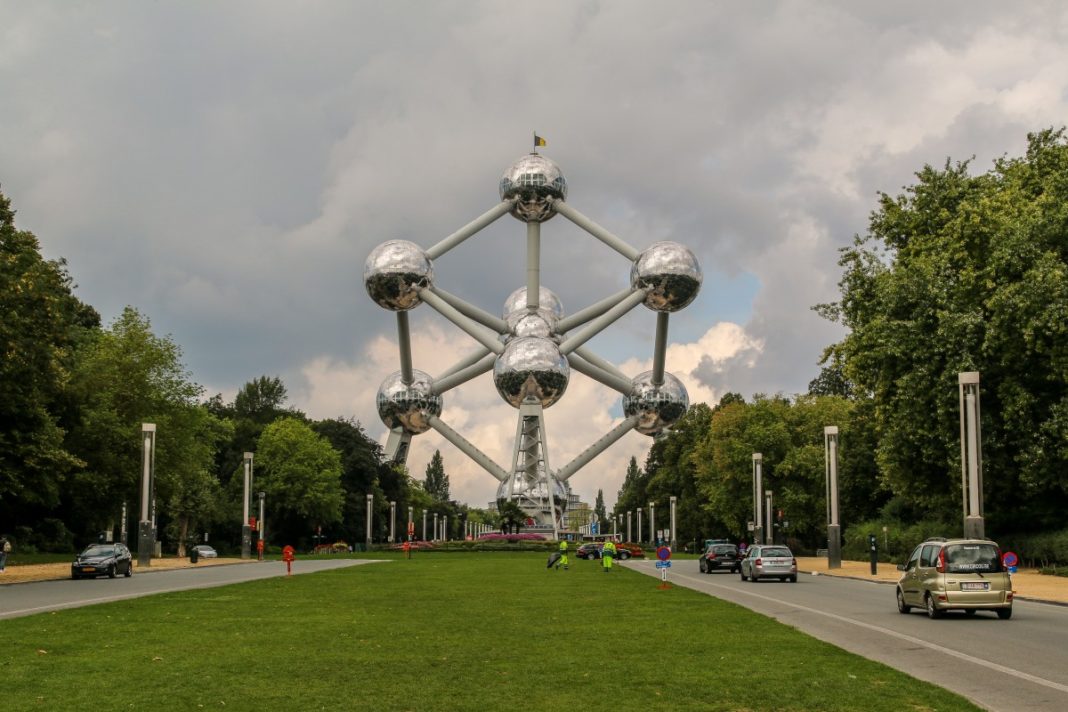The Atomium is a landmark building in Brussels, Belgium, originally constructed for the 1958 Brussels World’s Fair (Expo ’58). It is located on the Heysel/Heizel Plateau in Laeken (northern part of the City of Brussels), where the exhibition took place. Nowadays, it is the city’s most popular tourist attraction and serves as a museum, an art center, and a cultural place.
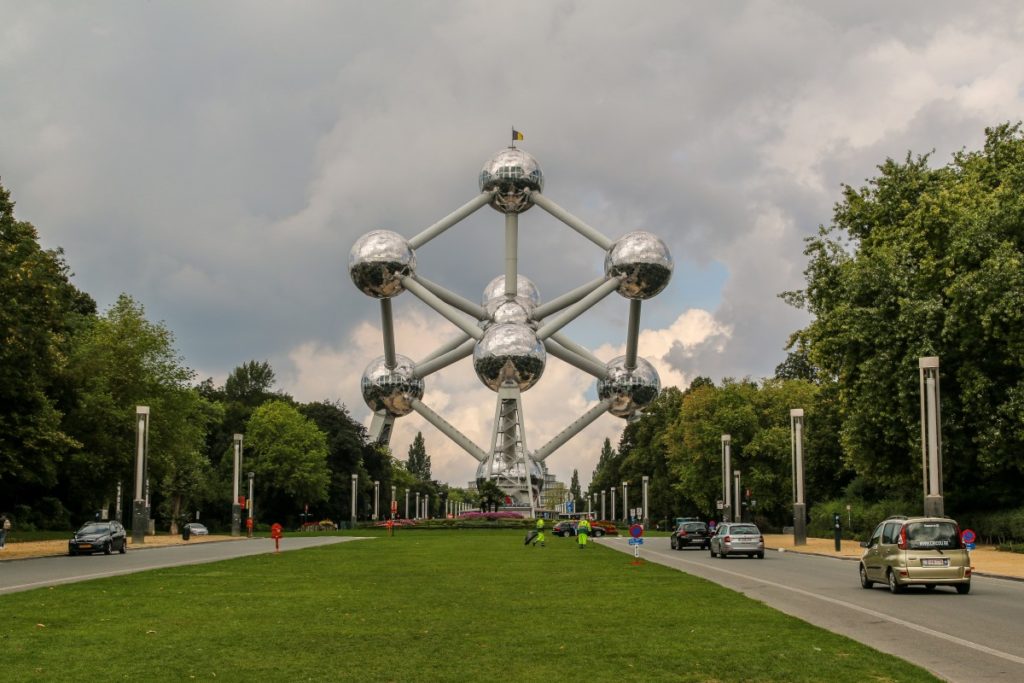
The building is located on the Square de l’Atomium/Atomiumsquare, at the intersection of the Boulevard du Centenaire/Eeuwfeestlaan with the Avenue de l’Atomium/Atomiumlaan and the Avenue de Bouchout/Boechoutlaan, and opposite the Centenary Palace of the Brussels Exhibition Centre (Brussels Expo).
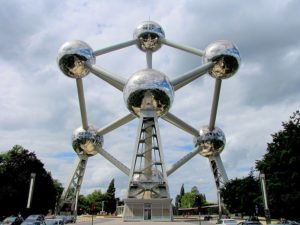
Designed by the engineer André Waterkeyn and the architects André and Jean Polak, it stands 102 meters tall. Its nine 18-meter-diameter stainless steel clad spheres are connected in the shape of a unit cell that could represent an iron crystal magnified 165 billion times. Tubes connecting the spheres enclose stairs, escalators, and an elevator (in the central, vertical tube) to allow access to the six visitable spheres, which contain exhibit halls and other public spaces. The top sphere includes a restaurant with a panoramic view of Brussels. The building was completely renovated between 2004 and 2006.
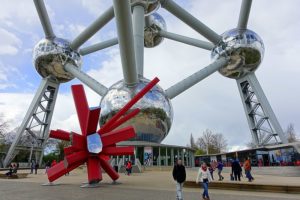
Of the six spheres accessible to the public:
- The bottom sphere is reserved for permanent exhibitions dedicated to the 1950s, Expo ’58 and the building’s construction;
- The second sphere hosts temporary exhibitions;
- The third and central spheres have a versatile vocation and allow the organization of various events, films, concerts, parties, or conferences;
- The top sphere, in addition to the panorama, holds a restaurant;
- The sixth sphere is the kids’ sphere, intended for the organization of workshops on urban pedagogy, allowing children from six to twelve years to spend the night there.
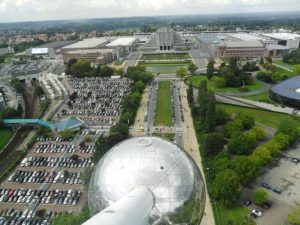
The Atomium, with over 600,000 visitors per year, is now the most popular tourist attraction in the capital of Europe, an art center, and an international symbol of Brussels and Belgium. In addition to its heritage value, it is also a cultural place. Over half of the building is dedicated to exhibitions with themes about Belgium and digital arts.
According to Wikipedia





